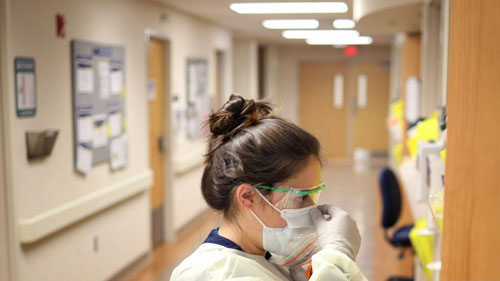A study of severe Covid-19 in the United Kingdom reveals the risk that healthcare workers take to help others.
A new study in the journal Occupational & Environmental Medicine examines the risks that “essential” and “nonessential” British workers will develop severe Covid-19.
It suggests that healthcare workers are seven times more likely to develop severe cases of Covid-19 than people with “nonessential” roles.
Stay informed with live updates on the current Covid-19 outbreak and visit our coronavirus hub for more advice on prevention and treatment.
Although it makes sense that people who interact with Covid-19 patients are at greater risk, this is the first study to compare their risk of developing severe disease with that of other types of workers.
“Our findings reinforce the need for adequate health and safety arrangements and provision of [personal protective equipment] for essential workers, especially in the health and social care sectors. The health and well-being of essential workers is critical to limiting the spread and managing the burden of global pandemics.”
The UK Biobank data allowed the researchers to track multiple factors that may be associated with the development of severe disease beyond one’s occupation.
A total of 120,075 employees, aged 49–64 years, were involved in the study. Black and Asian people, who are more likely to be essential workers, comprised nearly 3% of the group.
Around 32,127 employees, or 29% of the participants, were essential workers.
Healthcare workers made up 9% of the total cohort.
Social care and education workers made up 11% of the total cohort.
Those with “other” jobs, including police and people in food preparation, made up 9% of the total cohort.
The team broke the “healthcare workers” category down further into:
doctors and pharmacists, or “healthcare professionals”
medical support staff
nurses and paramedics, or “health associate professionals”
social care and transport workers
For the purposes of the study, the researchers considered anyone with a hospital diagnosis of Covid-19 and anyone who died of the disease to have a severe case.
Of the total study group, 271 employees had severe Covid-19.
The healthcare workers category overall experienced an average of seven times as many severe cases as nonessential workers.










